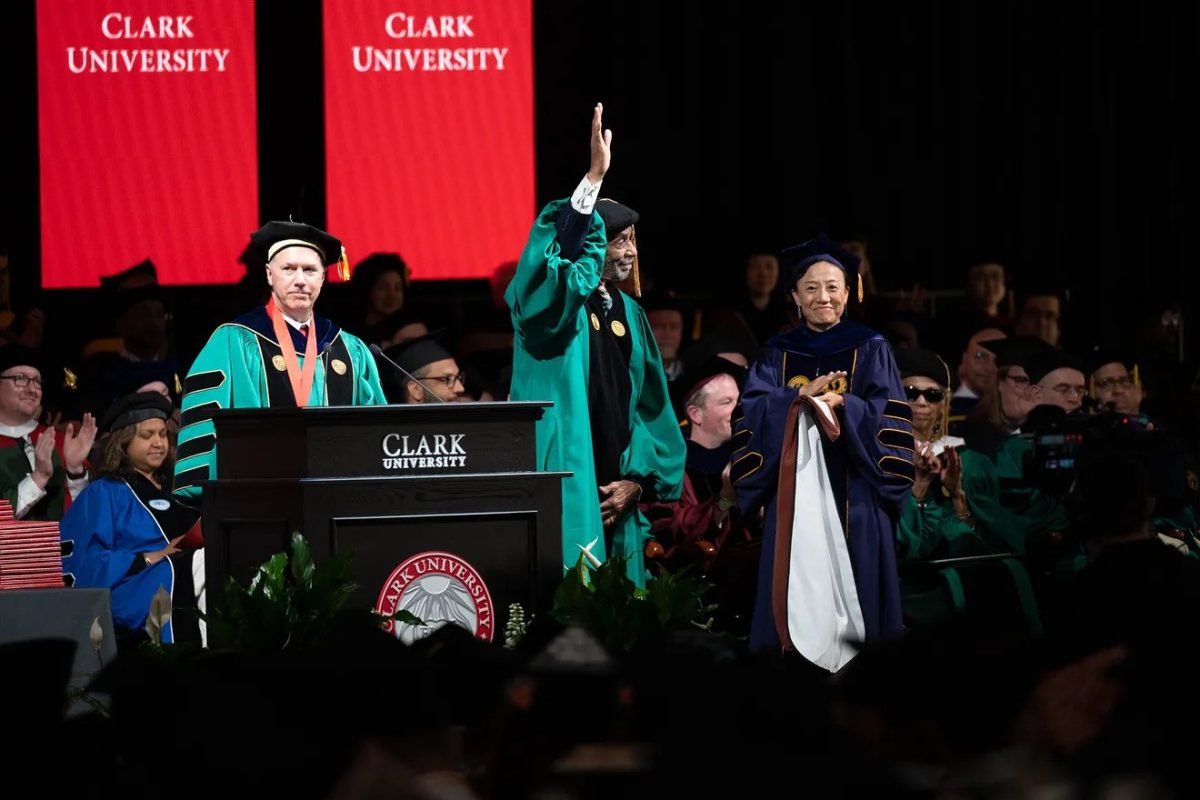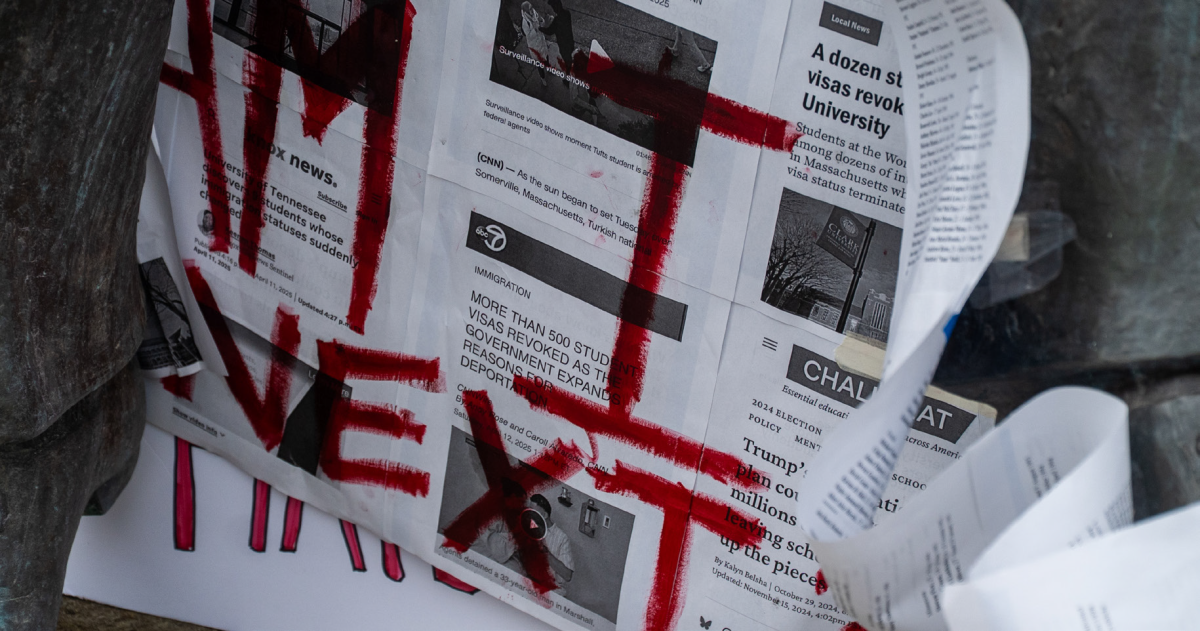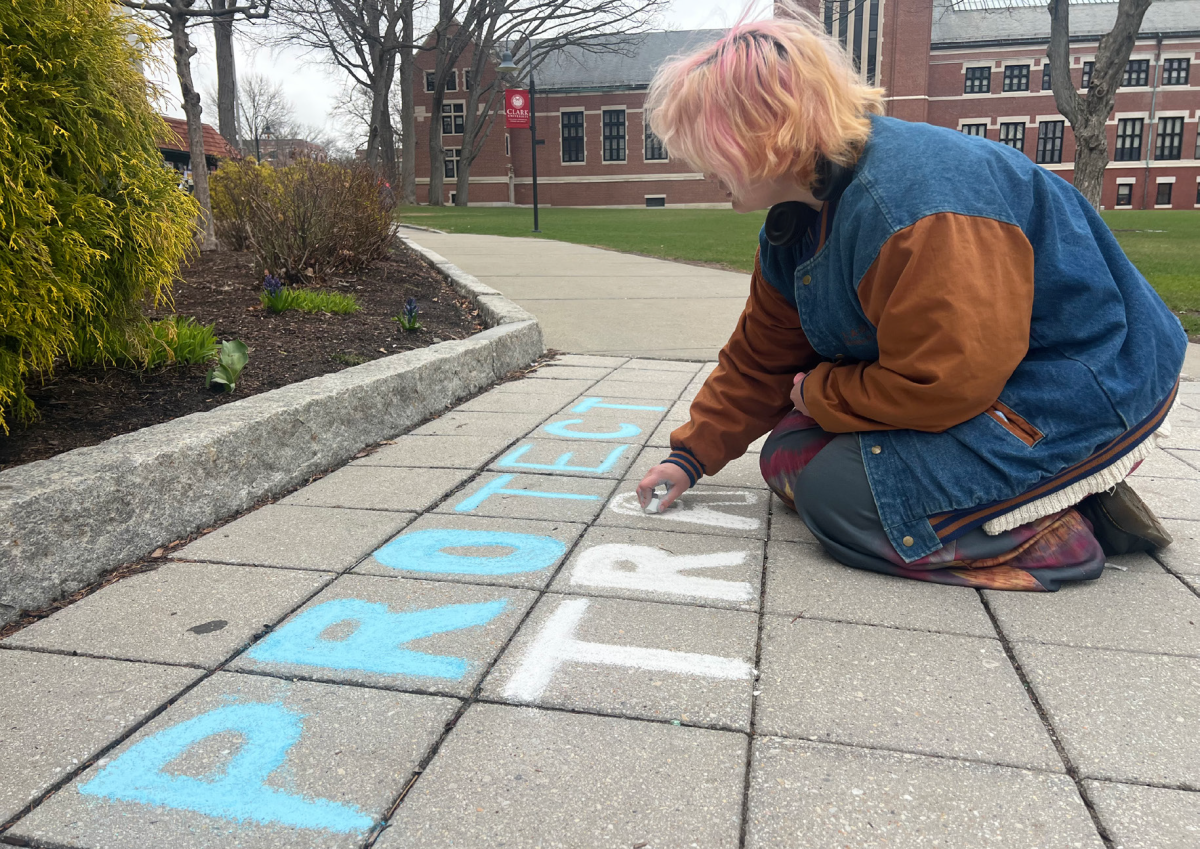With finals season concluded and commencement just around the corner, hundreds of soon-to-be alumni are preparing to receive degrees from Clark University.
Clark’s commencement ceremonies are steeped in the trappings of enduring ancient academic traditions. But what do these symbols mean, and why do they still captivate us?
In many ways, commencements across the United States this month will look similar. But each university interprets the ceremony, along with its traditions and meanings, in unique ways.
Here’s a look at what will be featured in Clark’s ceremonies on May 20 and why.
Regalia
Academic dress, or regalia, is instantly recognizable for its flowing robes and funny hats. The shapes, colors and symbols featured in regalia have particular meanings, though. And if you know what to look for, you can tell what degree the wearer received and where they earned it.
The clothing has medieval roots, originating from the traditional garb worn by academics at ancient universities such as Oxford and Cambridge.
Academics generally agree that today’s gowns are an evolution of robes that were commonplace in higher education hundreds of years ago. Hoods were added to keep warm, though the origins of its use as a symbol are the subject of speculation. So too are the mysterious origins of the square cap worn by undergraduate and master’s students, the mortarboard.
Clothing for each degree is distinguished by certain details. One of these is the shape of the sleeves: traditionally, bachelor’s robes have long, pointed sleeves, while master’s sleeves flare out at the wrists. Doctoral regalia is recognizable for its bell-shaped sleeves and velvet bars (more on this later).
Britain’s regalia traditions have long been borrowed by American universities, but it wasn’t until the turn of the 20th century that the dress was standardized nationwide. Clark University – then, still a graduate-only research university – appeared on the first registries of academic costume, published around 1895.
This was during a time that many universities “were beginning to emphasize their historic roots (or create them where they didn’t exist),” according to the Intercollegiate Registry of Academic Costume, in order to appeal to a growing market of college-bound, middle class Americans.
From its founding, Clark’s colors were white and emerald green. In 1909, during Sigmund Freud’s famous visit, Jonas Clark Hall was “made festive by decorations of emerald and white,” according to Prof. William Koelsch’s history of the lectures. These colors are featured in the hood worn by master’s and PhD students at Clark: white with one green chevron (a V-shape).
Among graduate students, hoods have two-sided colors. For master’s students, the colors on the front of the hood generally indicate the type of degree. Common colors at Clark are gold, symbolizing the sciences, drab (a light shade of brown) indicating degrees in business and light blue for education.
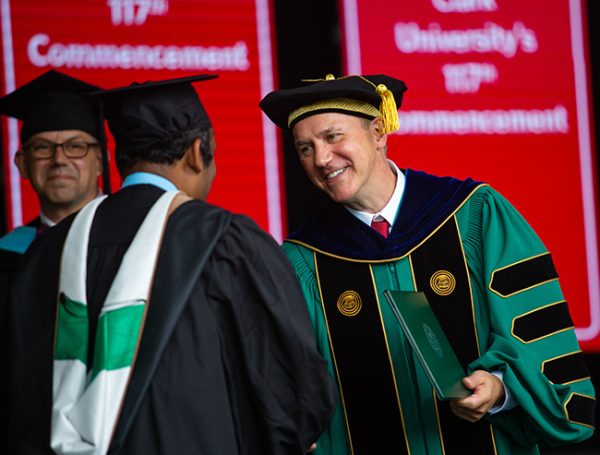
In 1902, when the undergraduate college was founded, students selected scarlet and white as its colors. The University retained its own symbols until 1920, when it merged with the college. At that time, scarlet was borrowed as a name for Clark’s sports teams and for this newspaper.
Hoods are less commonplace among bachelor’s students but are sported by Clarkies during commencement. It’s not clear when this tradition began, according to an official from the University Events and Ceremonies Office. But Clark’s undergraduate hood pattern – scarlet with one white chevron – was first featured in a 1927 registry published by the Intercollegiate Bureau of Academic Costume.
Undergraduates are also often seen wearing colorful cords, the meanings of which are not standardized nationwide, or even on single campuses. This year, for the first time, Clark’s Events Office will keep an inventory of affinity stoles and cords to try and properly identify each garment, the same official told The Scarlet.
Despite the widespread adoption of scarlet at Clark, emerald has endured as a symbol of Clark’s graduate programs. It is most prominently featured in the university’s doctoral robes, which are emerald with black velvet facings (the vertical bars on the front) and sleeve bars (three on each arm). A gold Clark seal appears on the facings.
Most doctoral graduates at Clark will wear hoods lined on the front with dark blue velvet, a symbol of the Ph.D. These students also stand out for their unique gold-tasseled caps (called tams).
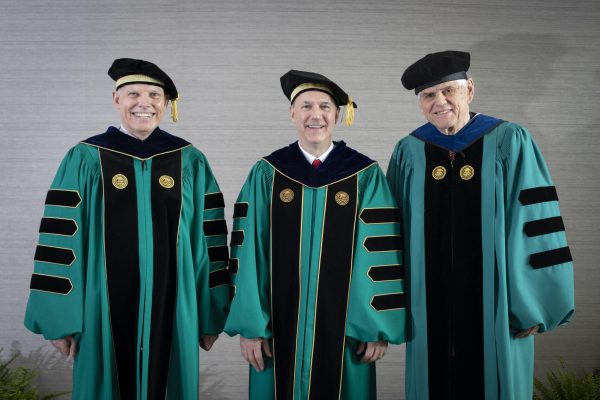
Doctoral regalia are particularly unique and colorful symbols of the universities that granted them. They are also worn by recipients of honorary degrees and by university leaders, like presidents, with added details.
Typically, a fourth velvet bar is added to each sleeve, along with gold lining. Clark’s president wears an especially unique, colorful hood: Ph.D. blue on top, followed by a green chevron above a scarlet chevron on a white background, all fringed in gold. According to the 2023 commencement program, this is to symbolize the unity of the college and the university.
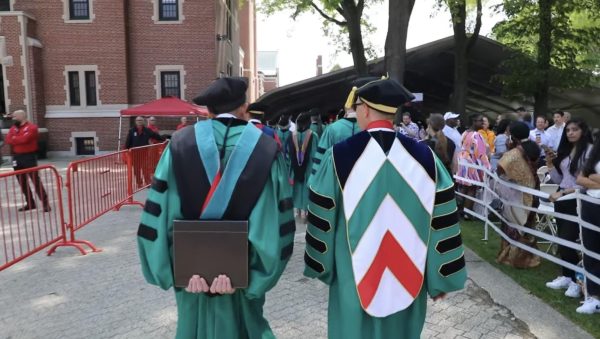
Bagpipes?
Music to accompany the ceremonies is another long-standing tradition. In the last couple centuries, triumphal marches or fanfares were often selected to add pomp to the procession. Famous tunes like “Pomp and Circumstance,” the British military march by Edward Elgar, have long been employed and are closely associated with high school graduations.
“Pomp and Circumstance” is less frequently heard at university commencements. Instead, bagpipes – specifically in the Scottish tradition – are fairly commonplace. At most schools, the tradition of marching to pipe and drum is relatively new.
American University switched from Elgar’s march to bagpipes in 1980. By then, “Pomp and Circumstance” had apparently cemented itself as the “high school graduation song,” and American University’s president decided that bagpipes would add an air of seriousness and invoke a sense of tradition. The University of Pennsylvania turned to pipes in the 1980s, too. By 1989, NYU had also made the switch, starting their own pipe and drum band.
Clark started using bagpipes around the same time. A review of archived commencement programs shows that one of the first mentions of pipes and drums was in 1981. Bagpipes are still used at major academic ceremonies at Clark.
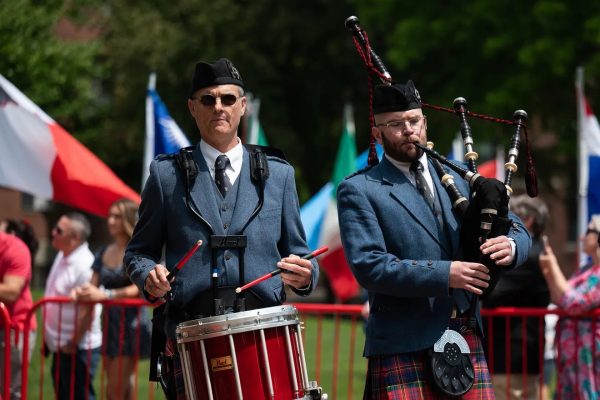
Commencement speakers and honorees
Universities customarily award honorary degrees – typically doctorates honoris causa – each year during commencement ceremonies to recognize achievements in their field. Three to four honorees are typically selected, with one being invited to give the commencement address.
Dr. Robert Bullard will speak at this year’s commencement. Bullard, often called the “father of environmental justice,” is a distinguished scholar and advocate in that field. Clark will also recognize a biologist, an immunobiologist and an award-winning chef.
Clark’s commencement ceremonies have drawn world leaders, accomplished artists and scientists and celebrities of all kinds to campus. The speaker at Clark’s first undergraduate commencement, in 1905, was President Theodore Roosevelt.
In 1909, Freud and the other guest lecturers that accompanied him were all awarded honorary degrees. In 1939, Clark honored writer and actress Cornelia Otis Skinner – the first woman to receive an honorary degree from the University. Wernher von Braun was recognized in 1959; ten years later, it was Buzz Aldrin and Edward Kennedy. In 1961, Ralph Johnson Bunche – a political scientist who was first African-American to win a Nobel Prize – gave the address. Carl Sagan was hooded in 1978, and Isaac Asimov addressed Clark graduates in 1984. In 1988, jazz legend Dizzy Gillespie was recognized. And in 1994, Clark welcomed Supreme Court Justice Harry Blackmun, author of the Roe v. Wade decision.
Flags
The display of international flags, a symbol of the many places Clarkies call home, is an enduring tradition that bookends the student experience.
The flags are put up around campus during orientation week, and put up again for senior week and commencement.
It’s not clear when the tradition began, but the flags’ colorful contribution to campus is deeply meaningful for many Clarkies.
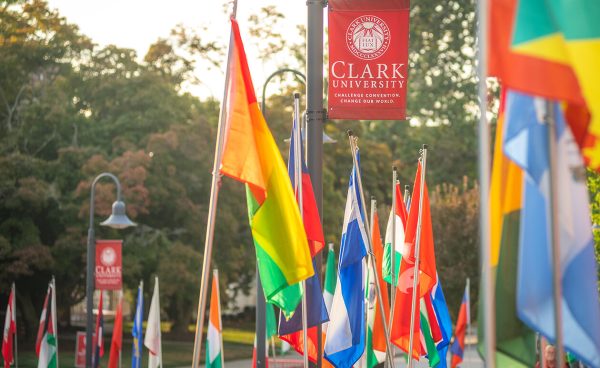
Clark’s 2024 commencement ceremonies will begin at 10 a.m. on Monday, May 20, at Worcester’s DCU Center.

